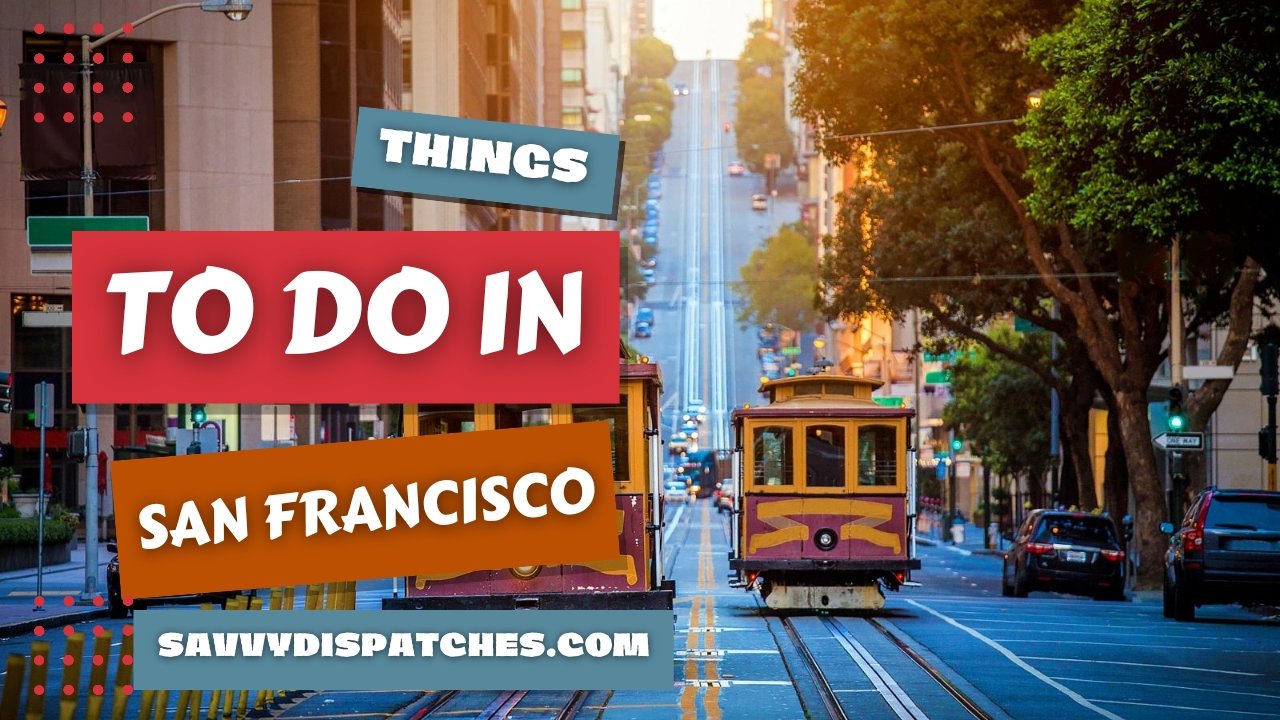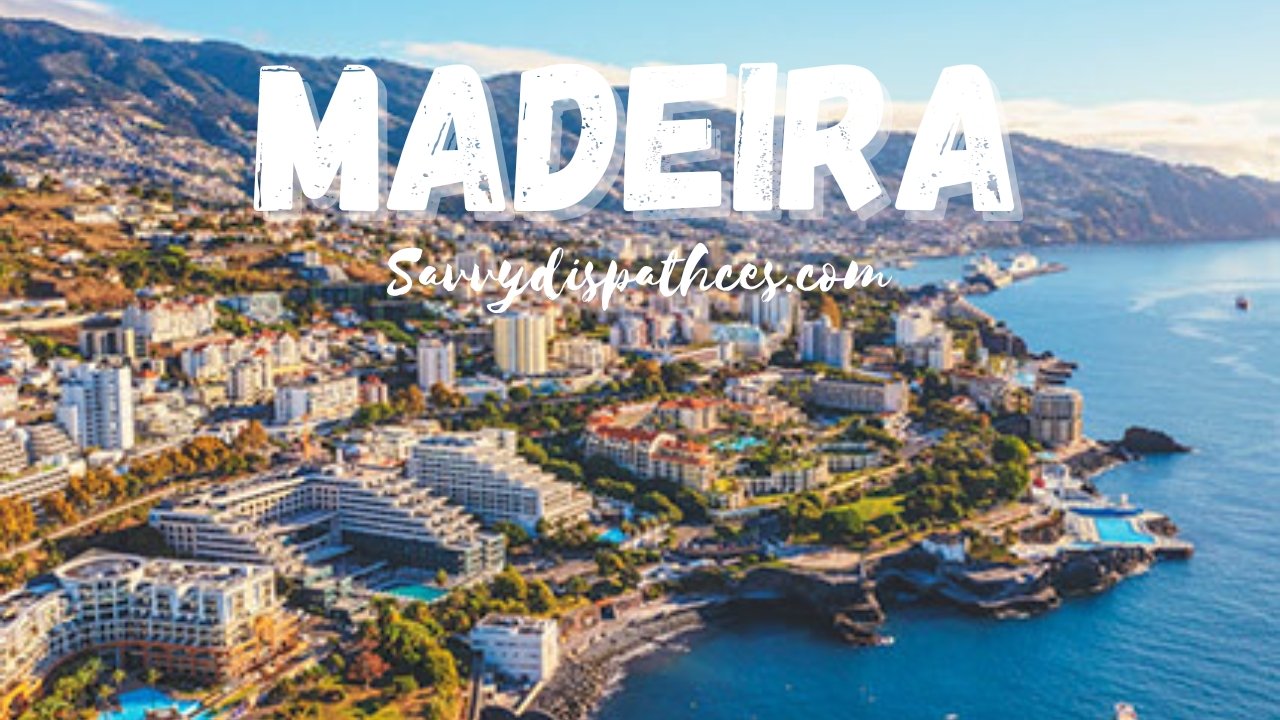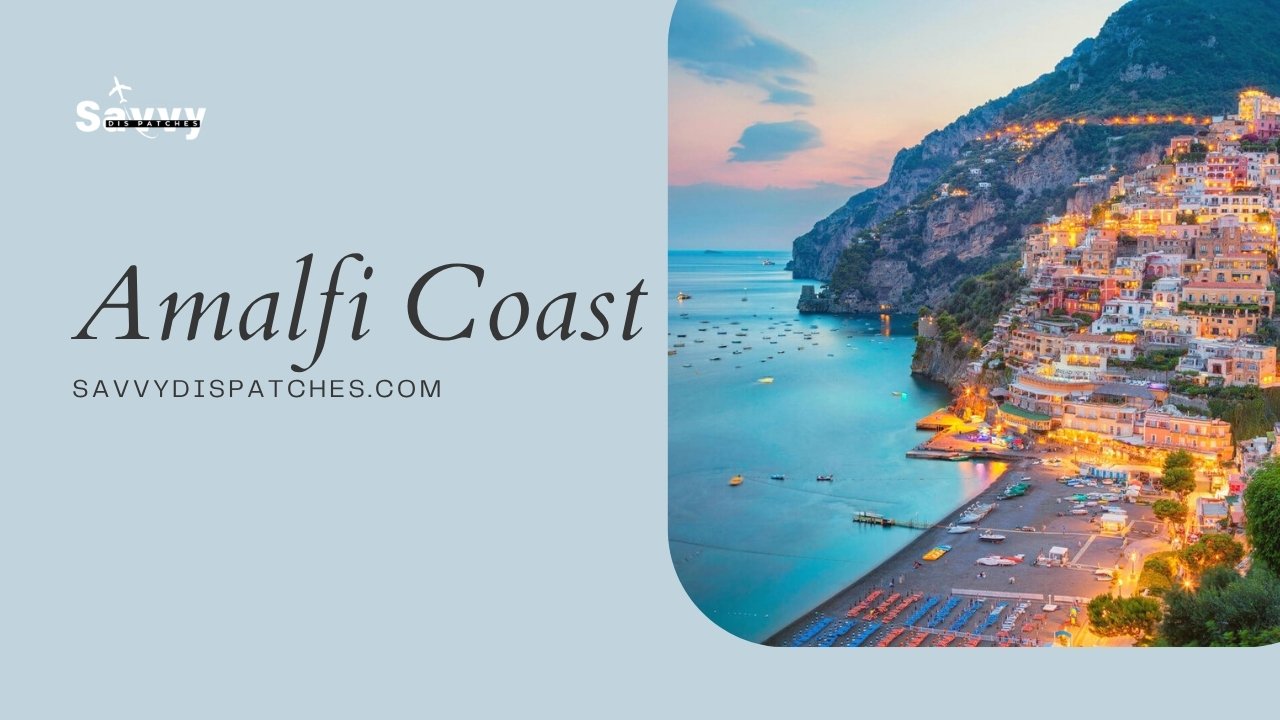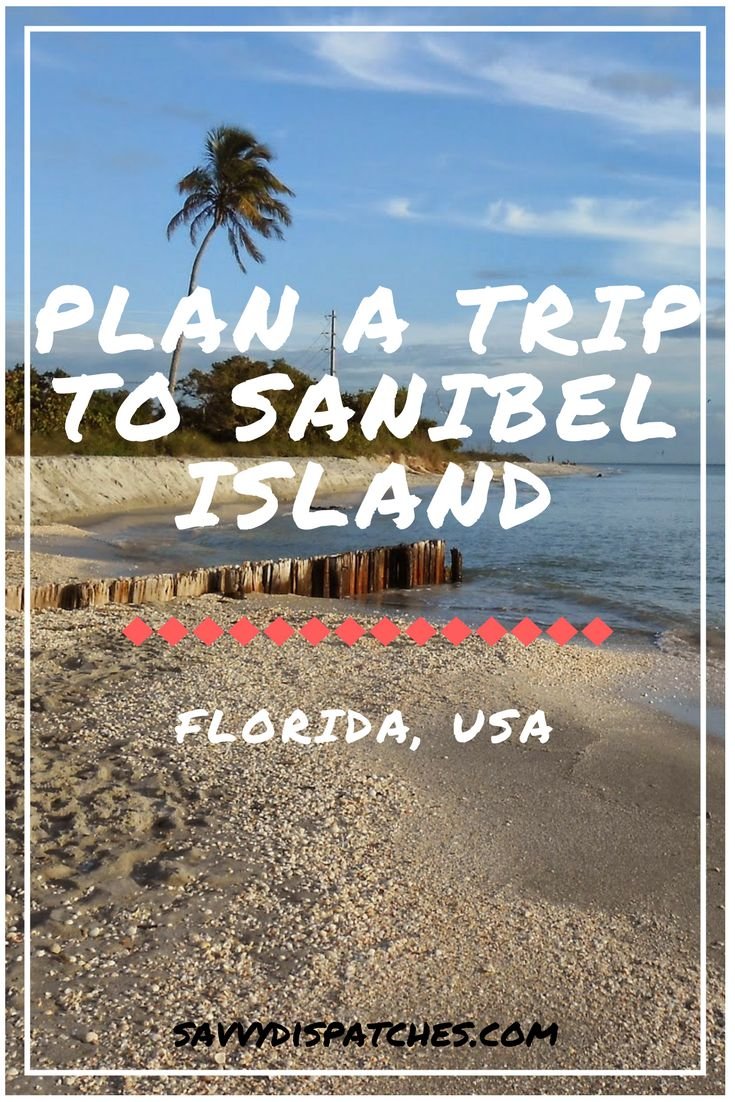Destinations
Things to Do in San Francisco: A Complete Travel Guide

San Francisco is one of the most iconic cities in the United States, attracting visitors from around the world. With its rich history, stunning architecture, and diverse culture, the city offers something for every type of traveler. From the Golden Gate Bridge to its famous cable cars, this guide explores everything you need to know for an unforgettable trip to San Francisco.
Best Time to Visit San Francisco
San Francisco is known for its mild climate, but there are some seasonal variations that can influence your trip. The best time to visit depends on your preferences:
Spring (March to May): Ideal for avoiding the summer crowds. The weather is mild, and the city’s gardens are in full bloom.
Summer (June to August): San Francisco has cool summers, with fog rolling in over the bay. Expect more tourists, especially around famous attractions like Fisherman’s Wharf.
Fall (September to November): This is arguably the best time to visit. The weather is still warm, and the city’s many parks and outdoor spaces are perfect for exploring.
Winter (December to February): Winters are chilly but rarely freezing. Crowds are fewer, and you’ll find off-season discounts, but some attractions may have shorter hours.
Top 10 Must-Visit Attractions
San Francisco is packed with iconic landmarks and lesser-known gems. Here are the top 10 attractions you can’t miss:
Golden Gate Bridge: The most iconic landmark of San Francisco, the Golden Gate Bridge offers breathtaking views. Be sure to visit the Golden Gate Bridge Welcome Center for more information and to get the perfect photo.
Alcatraz Island: A visit to this former prison is both eerie and fascinating. Tours are available that explain the history of the prison and its famous escape attempts.
Fisherman’s Wharf: A bustling waterfront area filled with restaurants, shops, and attractions. Don’t miss the sea lions at Pier 39!
Lombard Street: Known as the “crookedest street in the world,” this famous block offers quirky views and a fun experience for travelers.
Golden Gate Park: A massive green space filled with museums, gardens, and recreational areas. The California Academy of Sciences is located here and is a must-see.
Chinatown: San Francisco’s Chinatown is the oldest and one of the largest in North America. Explore the vibrant streets, markets, and eateries.
The Painted Ladies: These colorful Victorian houses located across from Alamo Square offer a stunning view of the city’s skyline.
Mission District: A cultural hotspot known for its street art, delicious Mexican food, and vibrant community.
Coit Tower: Located on Telegraph Hill, Coit Tower offers a 360-degree view of the city and the bay.
Twin Peaks: For one of the best panoramic views of San Francisco, hike to the top of Twin Peaks.
Local Cuisine Recommendations
San Francisco is a foodie’s paradise, offering a mix of cuisines that reflect its multicultural makeup. Here are a few must-try dishes and where to find them:
Clam Chowder in a Sourdough Bowl: A San Francisco classic, often served at Fisherman’s Wharf. Try it at Boudin Bakery, a historic sourdough maker.
Mission-Style Burritos: Huge, flavorful burritos that are perfect for fueling up while exploring. Head to La Taqueria in the Mission District.
Cioppino: A seafood stew that reflects the city’s Italian heritage. Try it at Sotto Mare in North Beach.
Dungeness Crab: A local favorite, often served simply with butter. Head to The Crab House at Pier 39 for a great experience.
Dim Sum: Explore Chinatown and stop by Yank Sing for a dim sum feast.
Transportation Tips
San Francisco has excellent public transportation, making it easy to get around without a car.
Airport Info: The main airport is San Francisco International Airport (SFO), about 13 miles south of the city. BART (Bay Area Rapid Transit) is the most affordable way to get to the city center.
Public Transport: The city has an extensive bus network, the Muni metro system, and the iconic cable cars. The Clipper Card is a convenient way to pay for rides.
Bike Rentals: San Francisco is bike-friendly, and renting a bike is a great way to explore the city, especially if you’re into adventure travel.
Car Rental: If you plan to explore beyond the city, such as Muir Woods or Napa Valley, renting a car is a good option.
Budget Breakdown
Whether you’re traveling on a budget or indulging in luxury, San Francisco offers options for all.
Budget Traveler: Expect to spend around $60-$100 per day. Stay in budget hotels or hostels, eat at casual eateries, and use public transportation.
Mid-Range Traveler: A daily budget of $150-$250 will allow you to stay in nicer hotels, dine at mid-range restaurants, and visit popular attractions.
Luxury Traveler: If you’re looking to splurge, your budget will likely range from $350-$500 per day, including luxury hotels, fine dining, and private tours.
Hidden Gems and Off-the-Beaten-Path Locations
For those looking to explore beyond the main tourist spots, San Francisco has several hidden gems:
Baker Beach: A quieter, more secluded beach with stunning views of the Golden Gate Bridge.
Mount Davidson: The highest point in the city offers a peaceful hiking trail and amazing views.
Seward Street Slides: A fun, hidden gem in the Castro District, where you can slide down two large concrete slides.
Safety Tips and Cultural Etiquette
San Francisco is generally a safe city, but like any major metropolitan area, there are certain things to keep in mind:
Avoid Late-Night Walks Alone in Certain Areas: Some neighborhoods, like Tenderloin, can be unsafe late at night.
Be Mindful of Your Belongings: Pickpocketing can occur in crowded areas, so always keep an eye on your personal items.
Respect the Local Culture: San Francisco is known for its diversity and progressive values. Be open-minded and respectful of the city’s inclusive and LGBTQ+ friendly culture.
Sample Itineraries
3-Day Itinerary:
Day 1: Golden Gate Bridge, Fisherman’s Wharf, Pier 39, Ghirardelli Square
Day 2: Alcatraz Island, Chinatown, Lombard Street, Coit Tower
Day 3: Golden Gate Park, California Academy of Sciences, Painted Ladies, Mission District
7-Day Itinerary:
Day 1-3: Same as the 3-day itinerary, with extra time to explore the neighborhoods and parks.
Day 4: Visit Muir Woods National Park, Sausalito
Day 5: Day trip to Napa Valley or Sonoma for wine tasting
Day 6: Explore the unique shops and restaurants in the Haight-Ashbury neighborhood
Day 7: Take a day trip to the nearby coastal areas like Point Reyes National Seashore or Monterey Bay Aquarium.
Conclusion
San Francisco is a city that caters to all kinds of travelers, whether you’re seeking adventure, relaxation, or cultural immersion. With its beautiful sights, vibrant neighborhoods, and rich history, there’s always something new to discover. Be sure to plan your visit according to your preferred season, and don’t forget to take in the local cuisine, the city’s eclectic culture, and its world-famous landmarks.
Travel Tip: Always bring a jacket! San Francisco’s weather can be unpredictable, especially with the fog rolling in from the bay.
Destinations
Madeira Travel Guide: Top Attractions, Hidden Gems & Local Tips
Destinations
Amalfi Coast Travel Guide: A Journey for Every Type of Traveler
Destinations
Mini Glasto, Major Fun: How the Isle of Wight Rocks for Families

Imagine the wind in your hair, music all around, kids laughing and dancing, and the sea just a stroll away.
That’s what it feels like to get tickets at the Isle of Wight Festival — the ultimate family-friendly music event that gives a nod to legendary festivals like Glastonbury Festival, but in a sweet, more manageable package.
Why it’s perfect for families
From toddlers to teens (and yes, grown-ups too), this festival pulls in a crowd where everyone can have fun together. There’s a dedicated kids zone called “Kidzone” with crafts, quiet spaces, story-times, and chill-out spots for little ones. It’s not just an add-on — it was built with families in mind.
There are also general camping areas with a relaxed vibe, home to families who’ve come to soak up music, nature, and time together.
One parent on Reddit described it simply: “It’s exceptionally family friendly… you’ll get 16-70s enjoying themselves.”
Getting tickets — what you need to know
Getting your tickets is easy, but there are a few smart moves to get the best experience:
- Family & Children’s Tickets: Children under 12 often go free with a paying adult. That means big savings and fewer worries.
- Choose your ticket type: You can buy a day ticket or a full weekend ticket (with camping). For full immersion and the real festival feel, the weekend ticket is the way.
- Book early: The best tickets and camping spots go fast. If you wait too long you might face higher prices or fewer options.
- Book children’s tickets at the same time as adults: Some ticket types require you to add kids at the time of adult booking. Don’t leave this for later.
- Check age rules: Every child must be accompanied by an adult aged 18+ and you’ll need proof of age for the kids.
- Camping vs day-trip: If you pick the camping option, consider bringing a small tent and some creature comforts. Families love the community feel in the camping fields.
- Budget for extras: While tickets cover entry, you’ll want to plan for food, maybe some workshop fees or merchandise.
- Ferry & accommodation: Since the festival is on an island, plan your transport and stay early. It makes a difference.
Why this is the “mini Glasto” for families
You get big-festival energy minus the overwhelming scale. Family-friendly activities pop up all over the site. You can bounce between the main stage headliners and the kids zone, where littler ones build cardboard creations, enjoy sensory pla,y or just relax in a toddler chill-out space.
Meanwhile, older siblings can check out live acts or hang with friends in safe zones. There’s also ease of access: You won’t feel like you’re lost in a sea of 50,000 strangers. You’ll be part of a buzzing atmosphere, yes, but still home with your family at the end of the day.
Quick checklist before you buy
- Decide if you want day-pass or weekend & camping.
- Make sure all family names and ages are added correctly in your booking.
- Confirm sleeping/camping gear if you stay overnight.
- Set a budget for food, fun zones, and perhaps upgrades.
- Check travel logistics: ferry, shuttle, bags & access.
- Bring ear protection for younger kids — loud music plus little ears need a bit of care.
- Pack for weather: a bit of sunshine, a bit of rain — layers are your friend.
Final thoughts
There’s something magic about combining a music festival with a family trip: you’re not just watching bands — you’re making memories. The Isle of Wight Festival gives you that. It’s loud, colourful, full of life … and also safe for kids and friendly for parents.
Get your tickets early, plan the trip, and get ready for a soundtrack to your family’s best holiday yet. Let the music start. 🎉

 Blog10 months ago
Blog10 months agoHow to Deal with Scabies While Traveling

 Travel10 months ago
Travel10 months agoRichmond, Virginia Street Art Guide

 Travel10 months ago
Travel10 months agoPerhentian Islands: How to Get There, What to Expect, & More

 Travel10 months ago
Travel10 months agoHow to Live in Your Car in New Zealand

 Travel10 months ago
Travel10 months agoSouvenir in Nepal: A Guide to Unique Handicrafts and Cultural Treasures

 Travel10 months ago
Travel10 months agoVegan Guide to Dining Out in Richmond, Virginia

 Food10 months ago
Food10 months agoVegetarian Food Nepal: A Journey into Flavorful Plant-Based Cuisine

 Travel7 months ago
Travel7 months agoA Local’s Guide to Sanibel Island, Florida

















